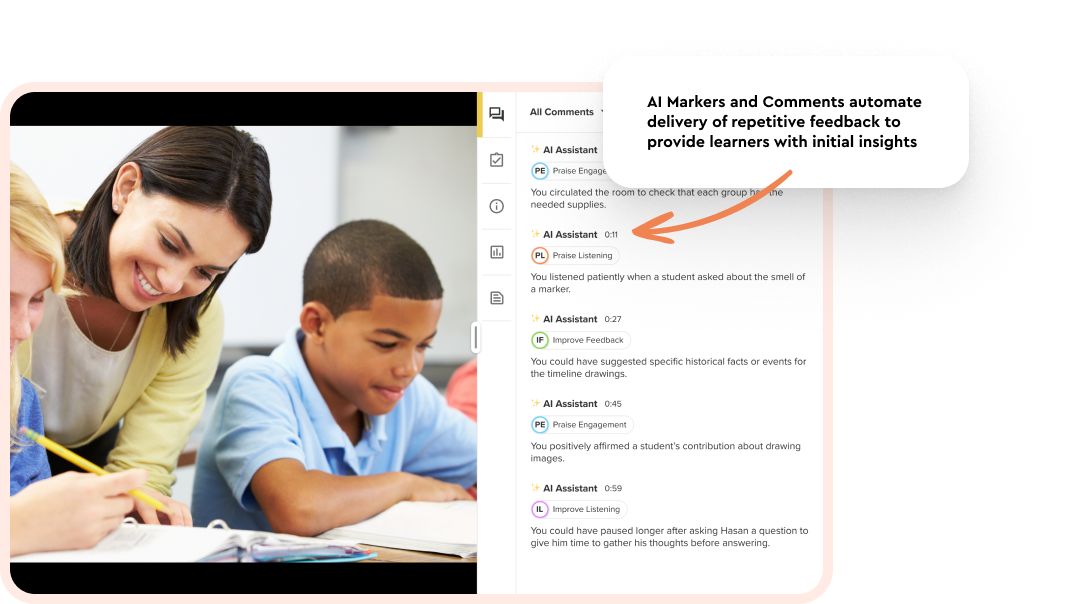How can educators be certain that students leave the classroom with the skills they need to succeed in their careers? They need the right strategies and tools in place to properly assess students’ skill acquisition.
With skills-based learning on the rise, let’s explore some best practices and strategies for assessing skills-based learning outcomes — so you can enhance your assessments and empower your students with the skills they need to succeed.
Understanding Skills-Based Learning Outcomes
Skills-based learning outcomes refer to the specific abilities and competencies that students are expected to acquire through their education. Unlike traditional academic outcomes that focus on knowledge retention, skills-based outcomes emphasize the practical application of that knowledge in real-world scenarios.
These outcomes can range from technical skills, such as coding or welding, to durable skills like communication and teamwork. For example, in a nursing program, a skills-based learning outcome might involve demonstrating proficiency in patient care techniques, while in a business course, it could involve effectively leading a team project. By identifying these outcomes and developing assessments that properly evaluate them, educators can ensure their students can apply the skills they’ve learned in practical and professional settings.

Assessing Skills-Based Learning Outcomes
But how do you actually assess these skills-based learning outcomes? This requires a thoughtful approach that goes beyond traditional testing methods. To truly measure and improve these outcomes, consider the following best practices and strategies:
1. Establish Clear and Specific Learning Objectives
Start by defining precise, skill-oriented learning objectives. These objectives should be actionable and directly tied to the skills you expect students to master. When students know exactly what is expected of them, they can focus their efforts on developing those specific competencies.
2. Adopt Outcome-Based Assessments
Design assessments that are closely aligned with your learning objectives. Instead of relying solely on written exams, incorporate practical assessments such as hands-on projects, simulations, video recordings, or real-world scenarios. These methods allow students to demonstrate their abilities in a context that mirrors the environments they will encounter in their careers.
3. Implement the Cycle of Practice, Reflect, Assess, and Feedback
This continuous cycle is essential for skill development. Begin by giving students opportunities to practice the skills they’re learning. Encourage them to reflect on their performance, identifying strengths and areas for improvement. Follow this with targeted assessments that measure their progress, and provide constructive feedback that guides them on how to refine their skills. This iterative process helps students internalize and enhance their abilities over time.
4. Use Technological Tools for Assessment
Incorporate digital tools that can support and enhance your assessment strategies. For example, platforms like GoReact allow students to record their skill demonstrations, which can then be reviewed and assessed by instructors. These tools can also facilitate the reflective practice process, as students can watch and critique their own performances. While the focus here is on strategies, these tools play a crucial role in streamlining the assessment process and providing more immediate, actionable feedback.
By integrating these assessment best practices, you can create a more dynamic and effective approach to assessing skills-based learning outcomes, ensuring that your students not only meet but exceed the expectations set for them.

Achieving Greater Results with GoReact
To take your skills-based assessments to the next level, GoReact offers a comprehensive platform that integrates video-based assignments with advanced, AI-powered feedback features. With GoReact, students can record themselves practicing a skill, which not only allows them to self-reflect but also provides instructors with a clear view of their performance.
The AI Assistant in GoReact further enhances the assessment process by offering faster, more accurate feedback. This AI-driven tool analyzes student performance, identifies areas for improvement, and provides timely suggestions to both students and instructors. The combination of video and AI not only speeds up the skills-based learning process but also delivers deeper insights, enabling more targeted interventions and support.
Ready to see how GoReact can transform your skills-based learning assessments?
Explore GoReact on your own with a self-demo to discover how you can everage our AI-powered video + feedback solution to enhance the effectiveness of your assessments and improve student outcomes — in the classroom and in their careers.








